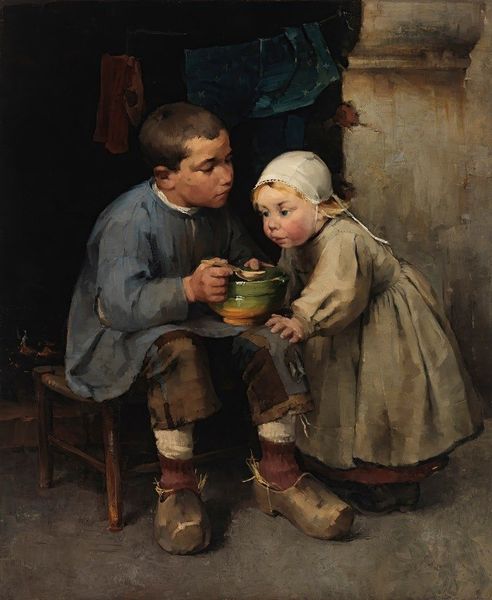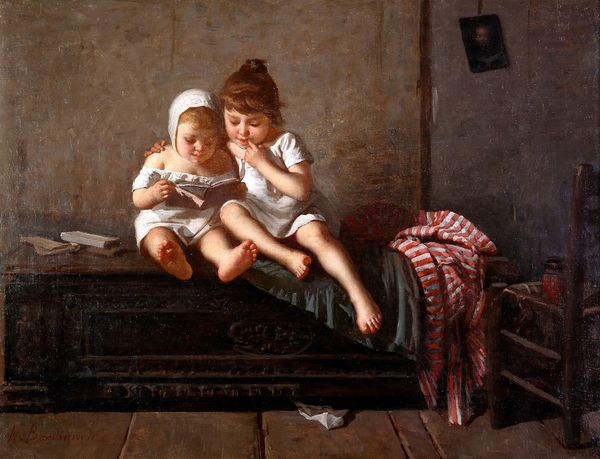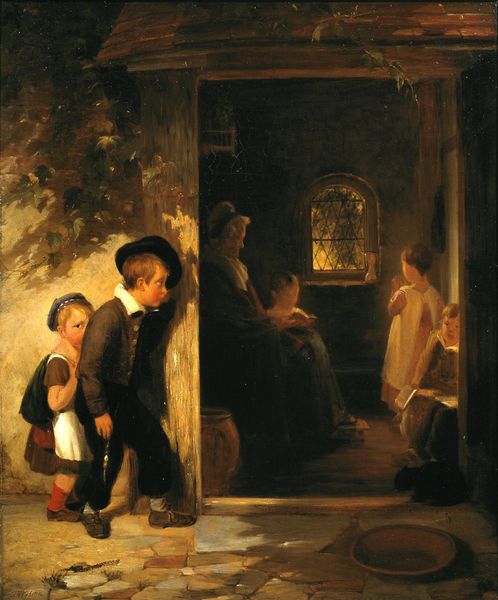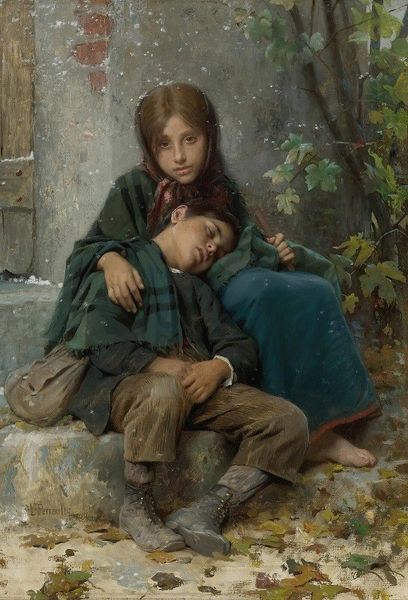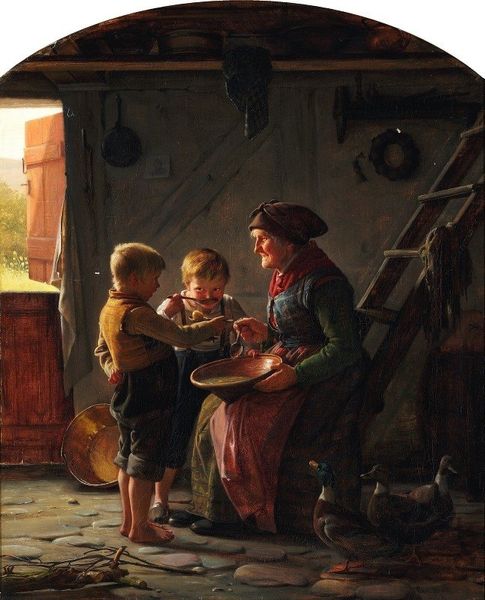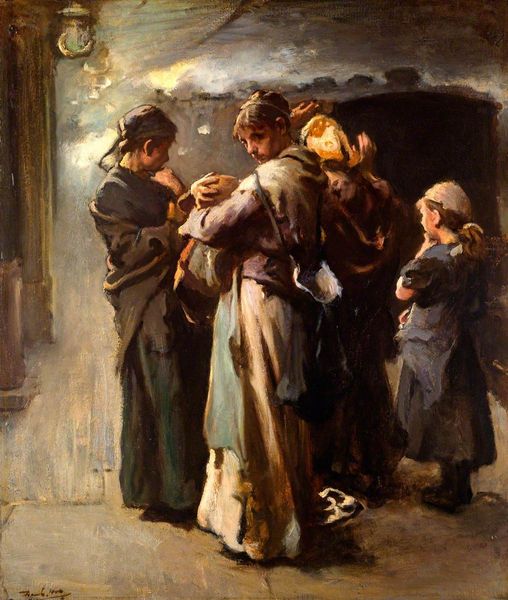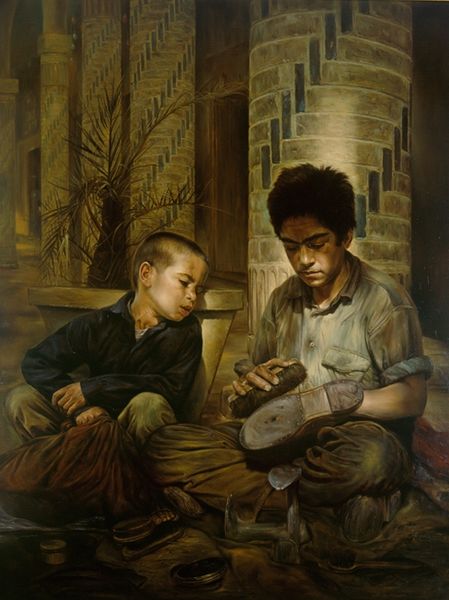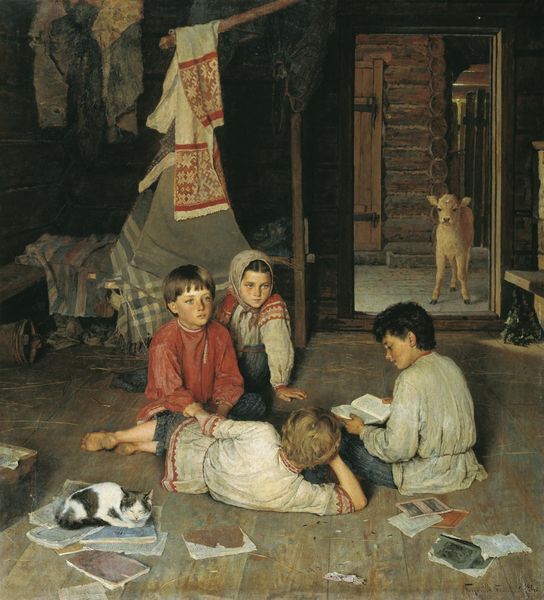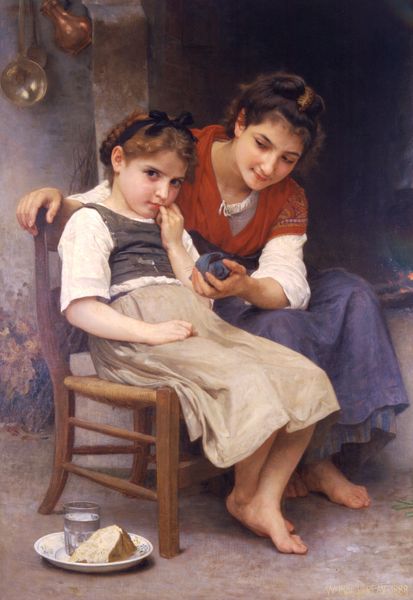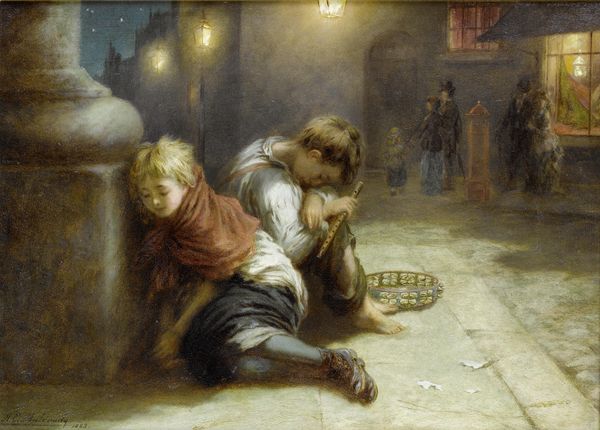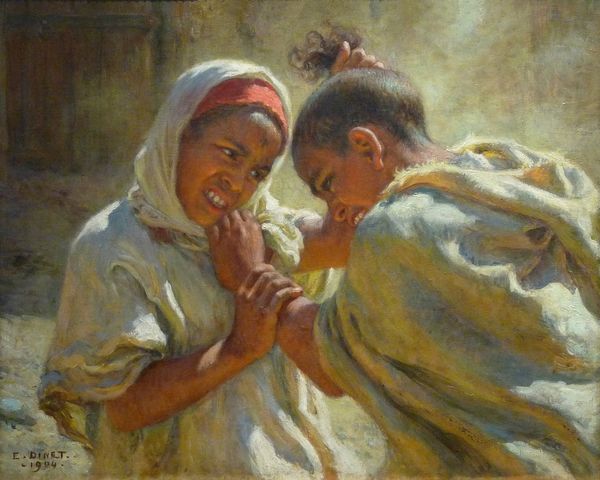
painting, oil-paint
#
portrait
#
gouache
#
narrative-art
#
painting
#
oil-paint
#
oil painting
#
child
#
group-portraits
#
painterly
#
genre-painting
#
realism
Dimensions: 116 x 76 cm
Copyright: Morteza Katouzian,Fair Use
Editor: So, this is "Children in the Alley," an oil painting by Morteza Katouzian, created in 1997. It has a certain… melancholy to it, wouldn't you say? What stands out to you about this piece? Curator: The symbols present are indeed evocative. The children themselves, their postures…notice how they are clustered together in front of the wall and a battered doorframe. What might that represent? Walls often denote boundaries – between public and private, safety and danger. Is the goose then an outsider? Does it represent another symbol? Editor: Hmm, I hadn't thought about the goose that way. More of a quirky detail, really. So, you’re saying the image, beyond being just children in an alley, carries deeper social connotations? Curator: Precisely. Look closely at the condition of the wall. The decaying plaster reveals the passage of time, doesn't it? The three children might signify a specific generation of Iranians, in the post-revolutionary period and after the Iran-Iraq war, carrying memories passed down or created for themselves. Notice also that the child in blue seems separated from the two huddled next to each other. Is this something we recognise? Editor: That’s interesting… Perhaps it reflects different experiences or perspectives within that generation. So, the children become a symbol, as does the goose. Curator: Exactly. Images speak to each other through symbols, echoing shared histories and hinting at deeper truths. Perhaps it serves as a window into shared hopes and dreams. Or possibly the feeling of being stuck in an environment you can't change. Editor: That’s a much richer interpretation than I first considered. I appreciate seeing how symbolism unlocks new ways to engage with a seemingly simple genre scene. Curator: Indeed, the true art lies in decoding the language of symbols and imagery within their specific cultural and historical context. This creates multiple viewpoints of an experience.
Comments
No comments
Be the first to comment and join the conversation on the ultimate creative platform.
